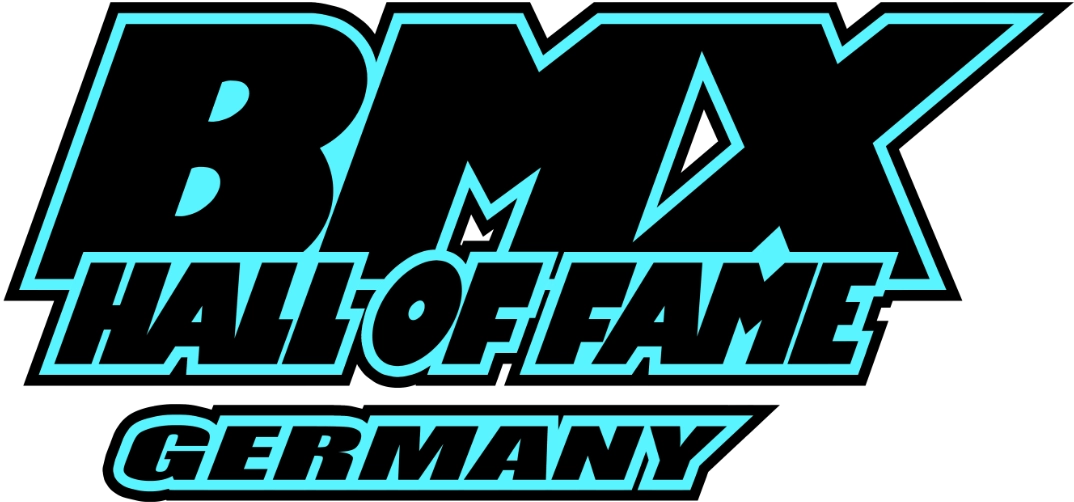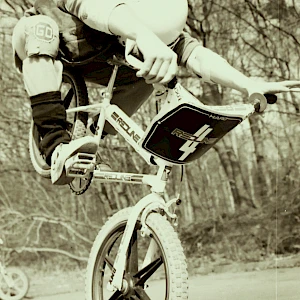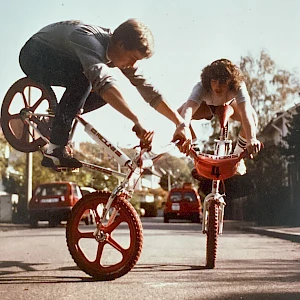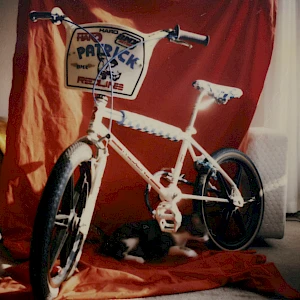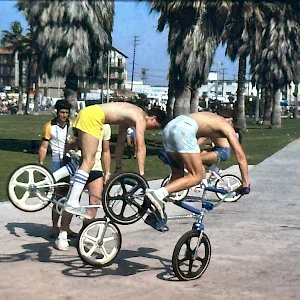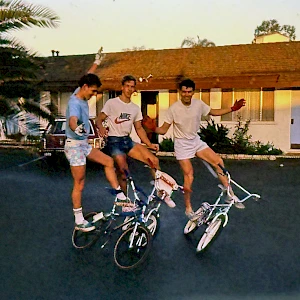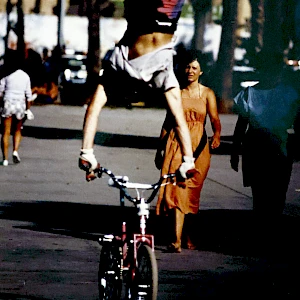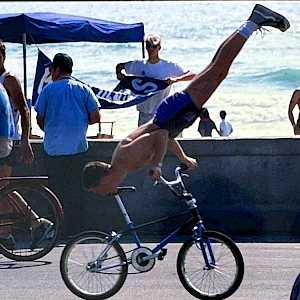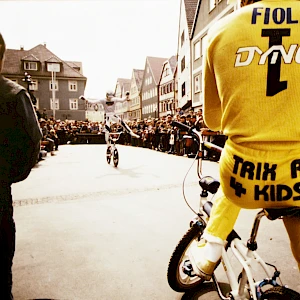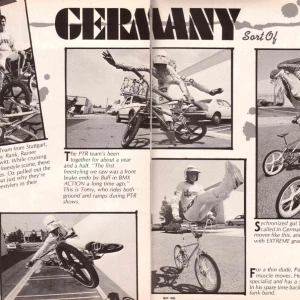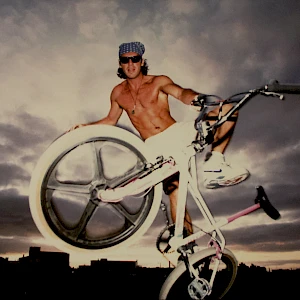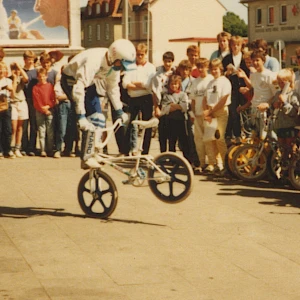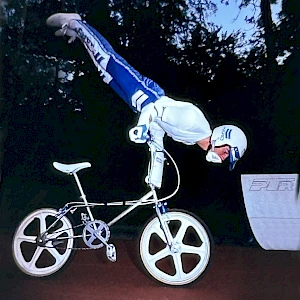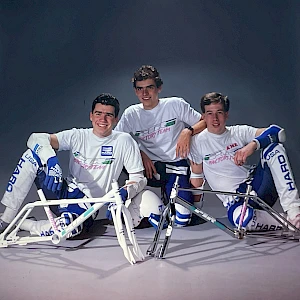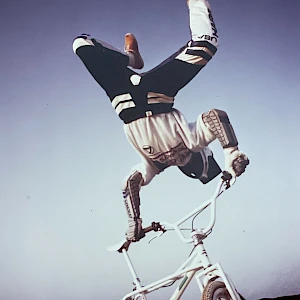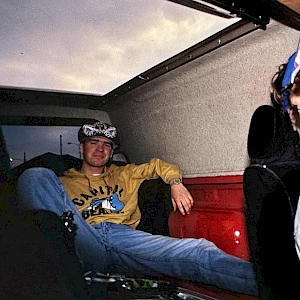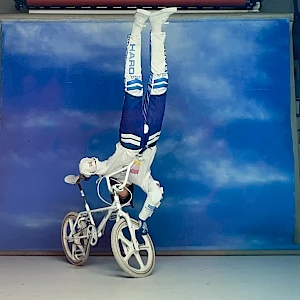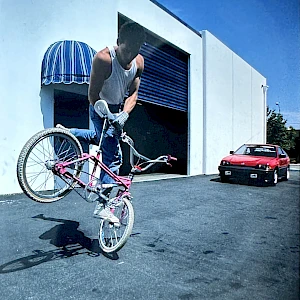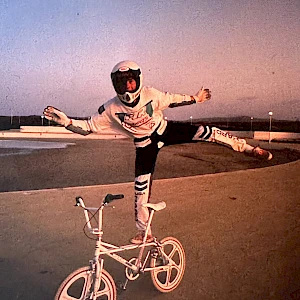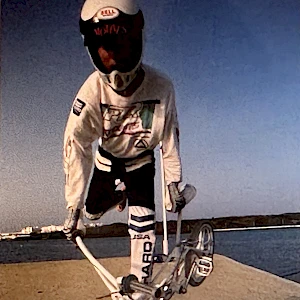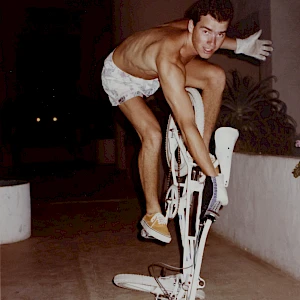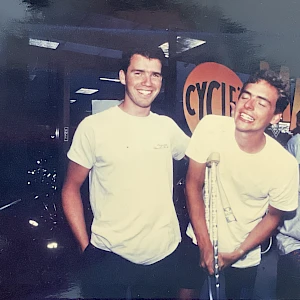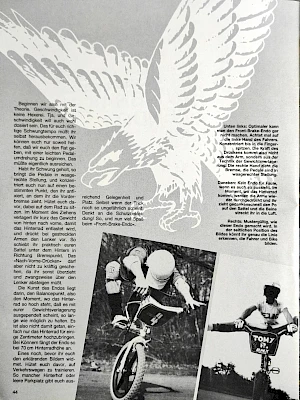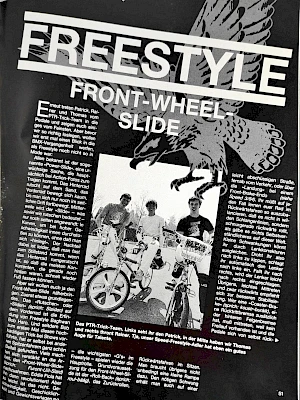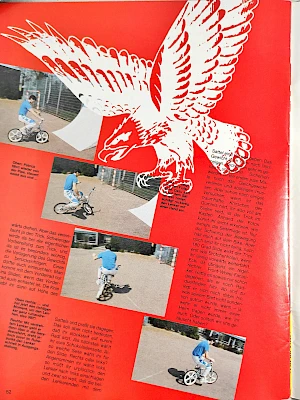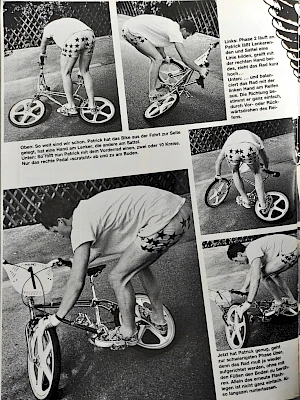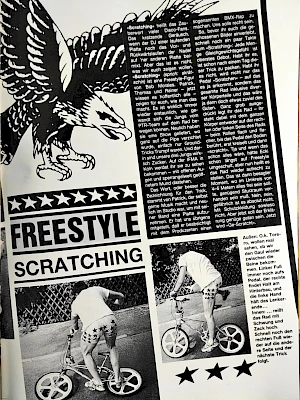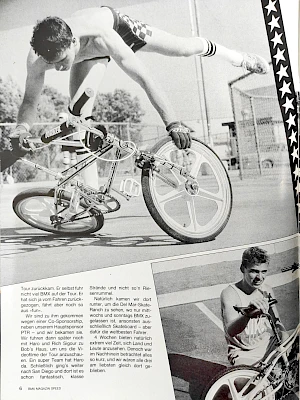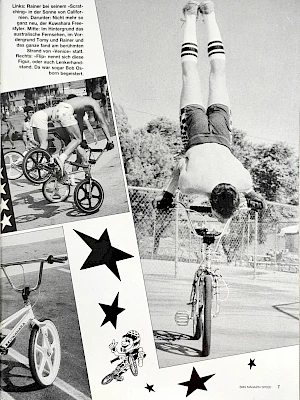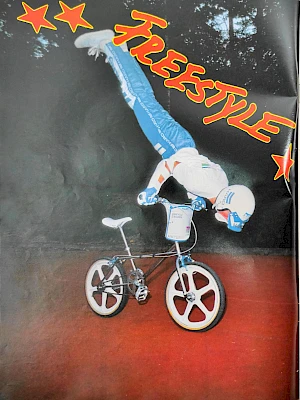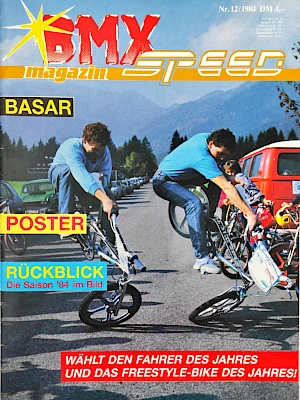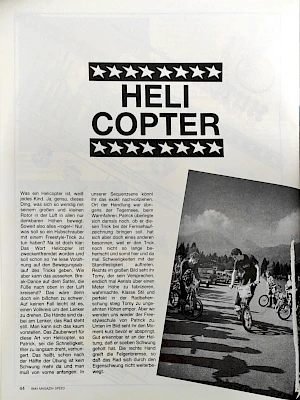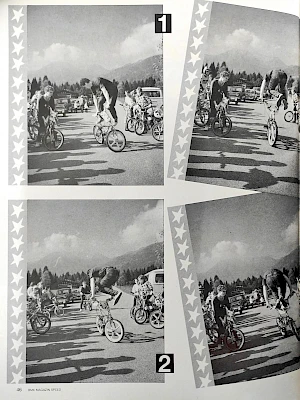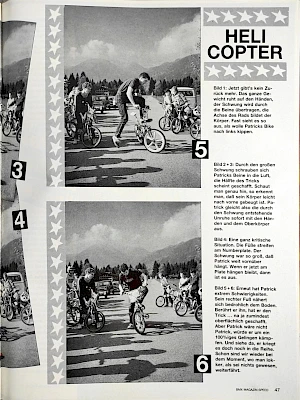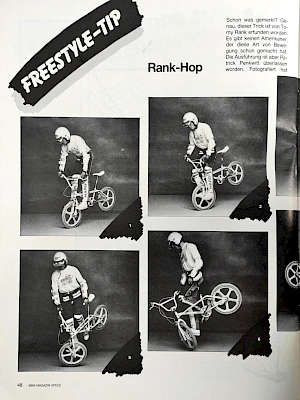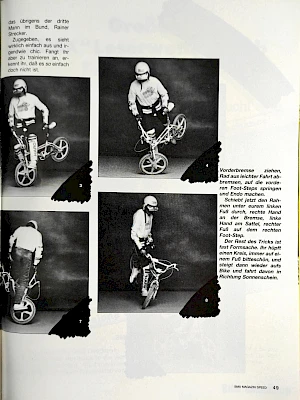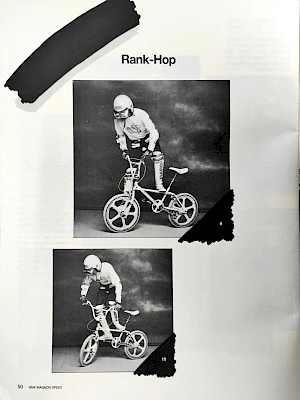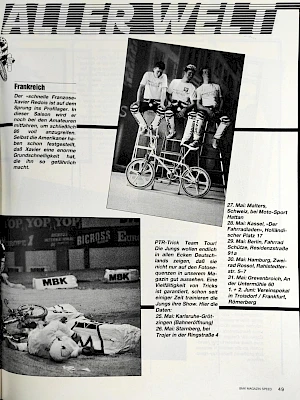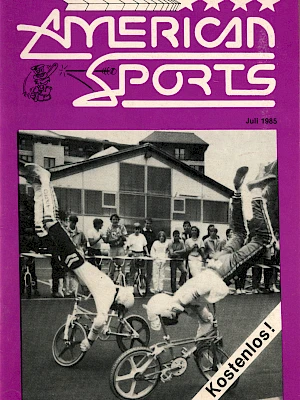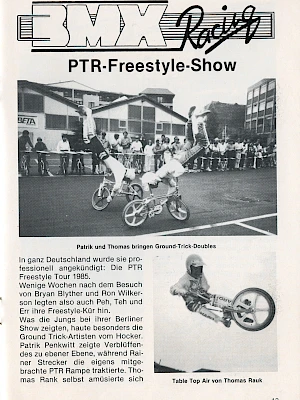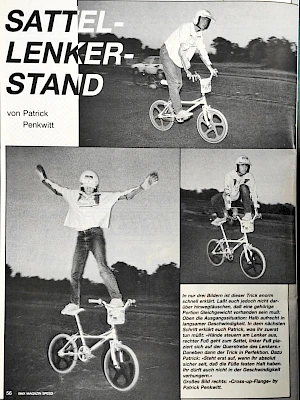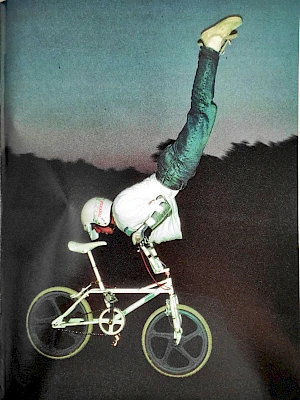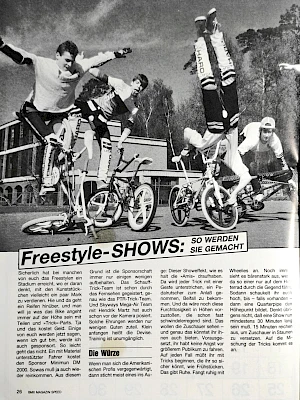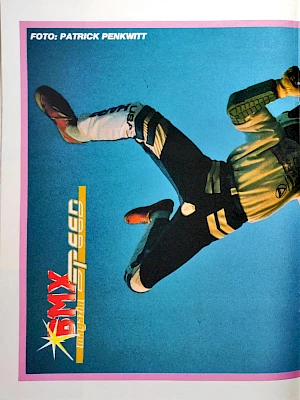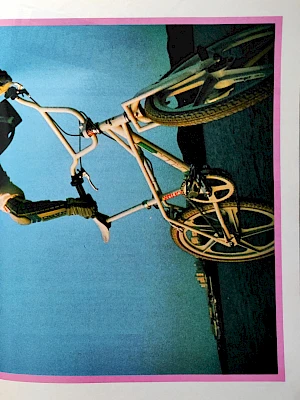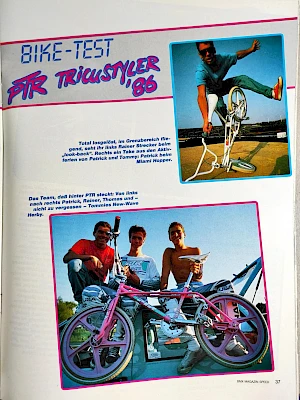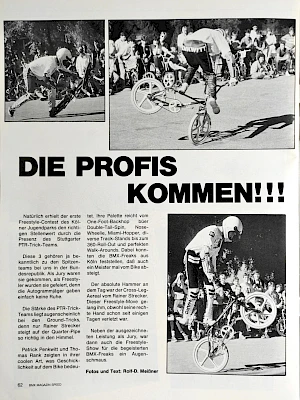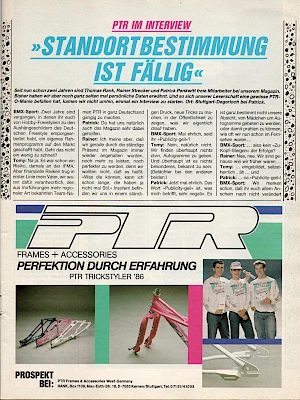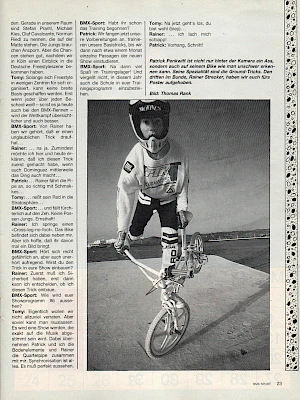Patrick Penkwitt
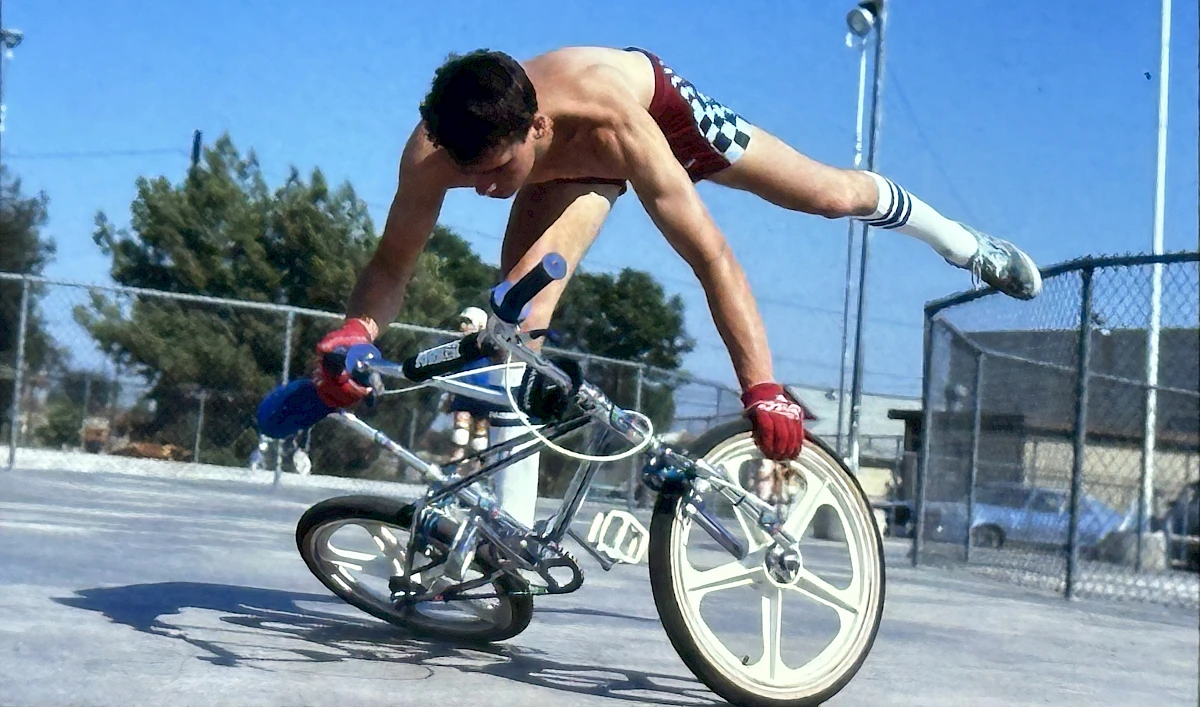
The PTR trick team's ground specialist impressed with powerful moves and technical finesse and was one of the first pure flatlanders in German BMX freestyle.
When Patrick Penkwitt left the department store with a brand new Redline bike in 1982, he wasn't really satisfied. He would much rather have had a "BMX"-brand bike, but unfortunately that wasn't available. But the bike would have to do for now and so he set off with his schoolmate Thomas Rank to practise Endos during the lunch break.
He had seen the endo in BMX Action magazine and it had made a deep impression on him. Back then, there was no YouTube, no video tapes and BMX wasn't even on TV. Patrick only saw real, moving BMX freestyle at the 1983 World Championships in Slagharen in the Netherlands, where Billy Stupple put on a show. So he somehow made up the tricks and developed his own idea. He and his two colleagues Thomas and Rainer Strecker rode fanatically every single day - "from the end of school to the beginning of school"
And the training paid off: the PTR trick team, as they now called themselves, started doing shows in the Stuttgart area. These shows caught the attention of Aris Donzelli from Speed magazine and he began to call on the three of them for trick tips and photo shoots. The coverage quickly helped PTR to national fame in the small scene and of course a big sponsor was not long in coming: a contract with the American bike manufacturer GT (via the German wholesaler Sport Import) was already on the table ready to be signed and the bikes had already been delivered when PTR then decided against it: the contract seemed too restrictive for them, they were supposed to commit to riding in every contest and the three wanted more freedom. Instead, they founded their own company and launched the PTR Trickstyler on the market with the help of Thomas Rank's parents.
As a professional team with their own logo, clothing and bike, they went on a major tour throughout Germany in spring 1985 and got to know the emerging freestyle scene in Germany and Switzerland. They appeared in several major television programmes, including the "Ferienkalender" and "Aktuelles Sportstudio" of ZDF. All the complexes that one can have with a sport as unknown and obscure as BMX freestyle were reinforced there: the Sportstudio presenter Bernd Heller refused to even look at the three of them, let alone announce them by name. He made no secret of his contempt for this "children's stuff". It was only after massive protests from Patrick, Thomas and Rainer that they were announced half-heartedly and with a long delay and made their appearance while the credits were already rolling. But the baby was now in the well: BMX Germany got to see the PTR team in action, confirming that all the hype from Speed was justified: the three of them were good!
In 1986, the PTR Trickstyler was revised again and the magazine "BMX Sport", as Speed was now called, announced the PTR boys' big attack on the international contest scene. Patrick, Thomas and Rainer were once again judges at the Jugendpark, at the second major German freestyle contest. Together with Martin Aparijo, Dennis Langlais and Stephan Prantl, they put on a show in front of a large audience of the up-and-coming and ambitious German BMX freestyle scene.
But towards the end of 1986, the air seemed to be out. The "BMX Sport" magazine was cancelled, Patrick was playing drums in a band on the side, they were all about to graduate from high school and the call of the ladies could no longer be ignored. The three of them mutually decided to bury the PTR trick team and stop producing frames.
But Patrick moved on. As the son of a family of photographers, he always had a well-equipped photo bag with him from an early age. Inspired by the glossy photography of Freestylin' photographer James Cassimus, he experimented with lighting and angles, got tips from his family and soon achieved results that were impressive. His pictures appeared in Speed and Patrick laid the foundations for his later career: After a few years as a photographer for freestyle and sports magazines in Germany and California, he moved to Florida and dedicated himself to fashion and advertising photography.
Patrick Penkwitt was probably the first pure flatlander known throughout Germany and an inspiration for a whole generation of freestylers. His appearances in Pfiff, Ferienkalender and Aktuelles Sportstudio were for many the very first time that they had seen freestyle and especially flatland in motion outside of the often posed magazine photos. He proved that you don't have to be from Sunny California to be an impressive BMX rider, paving the way for many to follow in his footsteps. For his role as "P" in PTR and his individual contribution to BMX freestyle in Germany, he was inducted into the German BMX Hall of Fame in 2024.
